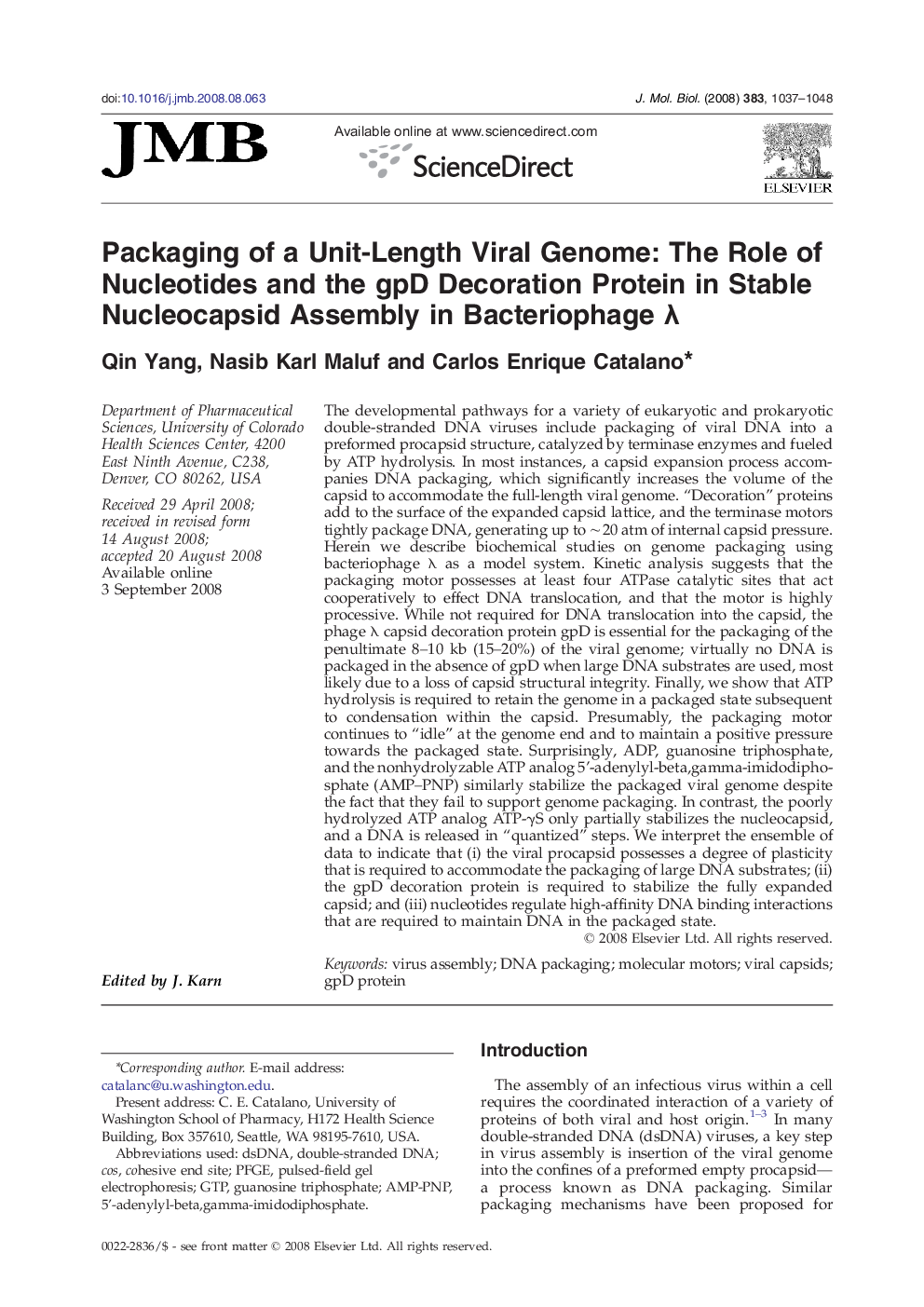| کد مقاله | کد نشریه | سال انتشار | مقاله انگلیسی | نسخه تمام متن |
|---|---|---|---|---|
| 2186860 | 1096083 | 2008 | 12 صفحه PDF | دانلود رایگان |

The developmental pathways for a variety of eukaryotic and prokaryotic double-stranded DNA viruses include packaging of viral DNA into a preformed procapsid structure, catalyzed by terminase enzymes and fueled by ATP hydrolysis. In most instances, a capsid expansion process accompanies DNA packaging, which significantly increases the volume of the capsid to accommodate the full-length viral genome. “Decoration” proteins add to the surface of the expanded capsid lattice, and the terminase motors tightly package DNA, generating up to ∼ 20 atm of internal capsid pressure. Herein we describe biochemical studies on genome packaging using bacteriophage λ as a model system. Kinetic analysis suggests that the packaging motor possesses at least four ATPase catalytic sites that act cooperatively to effect DNA translocation, and that the motor is highly processive. While not required for DNA translocation into the capsid, the phage λ capsid decoration protein gpD is essential for the packaging of the penultimate 8–10 kb (15–20%) of the viral genome; virtually no DNA is packaged in the absence of gpD when large DNA substrates are used, most likely due to a loss of capsid structural integrity. Finally, we show that ATP hydrolysis is required to retain the genome in a packaged state subsequent to condensation within the capsid. Presumably, the packaging motor continues to “idle” at the genome end and to maintain a positive pressure towards the packaged state. Surprisingly, ADP, guanosine triphosphate, and the nonhydrolyzable ATP analog 5'-adenylyl-beta,gamma-imidodiphosphate (AMP–PNP) similarly stabilize the packaged viral genome despite the fact that they fail to support genome packaging. In contrast, the poorly hydrolyzed ATP analog ATP-γS only partially stabilizes the nucleocapsid, and a DNA is released in “quantized” steps. We interpret the ensemble of data to indicate that (i) the viral procapsid possesses a degree of plasticity that is required to accommodate the packaging of large DNA substrates; (ii) the gpD decoration protein is required to stabilize the fully expanded capsid; and (iii) nucleotides regulate high-affinity DNA binding interactions that are required to maintain DNA in the packaged state.
Journal: Journal of Molecular Biology - Volume 383, Issue 5, 28 November 2008, Pages 1037–1048